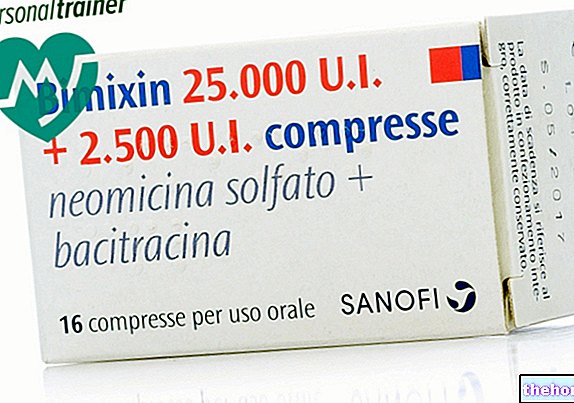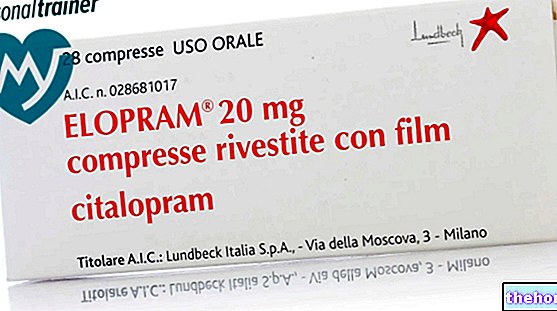Active ingredients: Paracetamol, Chlorphenamine (Chlorphenamine maleate), Sodium ascorbate
Zerinolflu 300 mg + 2 mg + 280 mg effervescent tablets
Why is Zerinolflu used? What is it for?
Zerinolflu is an analgesic (relieves pain) and antipyretic (reduces fever) for oral use that contains the active ingredients paracetamol, chlorphenamine maleate and sodium ascorbate.
Zerinolflu is used to treat symptoms of the flu and colds in adults.
Contraindications When Zerinolflu should not be used
Do not take Zerinolflu
- if you are allergic to paracetamol or to chlorphenamine maleate or to sodium ascorbate (vitamin C) or to any of the other ingredients of this medicine) or to other antihistamines (substances similar to chlorphenamine, ie medicines used in the treatment of allergies);
- in pregnancy and lactation;
- if you have severe haemolytic anemia (disease caused by the breakdown of red blood cells);
- if you have a deficiency in a certain enzyme called glucose-6-phosphate dehydrogenase (lack of which can cause haemolytic anemia);
- if you have severe hepatocellular insufficiency (disease associated with impaired liver function);
- if you have glaucoma (eye disease often associated with an increase in the pressure of the fluid inside the eye);
- in case of prostatic hypertrophy (disease characterized by an increase in the volume of the prostate);
- in case of bladder neck obstruction (urinary bladder obstruction);
- in case of pyloric, duodenal and other tracts of the gastrointestinal system (gastrointestinal diseases characterized by narrowing of specific parts of the digestive system);
- in case of urogenital stenosis (narrowing of the urinary and reproductive organs).
Precautions for use What you need to know before taking Zerinolflu
Talk to your doctor or pharmacist before taking Zerinolflu.
As it contains paracetamol, use this medicine with caution if you have kidney or liver failure. During treatment with paracetamol, before taking any other medication, you should check that it does not contain paracetamol, as if paracetamol is taken in high doses, serious side effects may occur (see also section "If you take more Zerinolflu than you should ").
Also, before combining any other medication, contact your doctor.
As severe allergic reactions to paracetamol (eg anaphylactic shock, see also section "Possible side effects") have been observed, at the first signs of an allergic reaction following the use of Zerinolflu, stop treatment and consult your doctor.
If the fever persists for more than three days, or if symptoms do not improve or others appear within three days, or are accompanied by high fever, rash (rash accompanied by redness of the skin), excessive mucus and persistent cough, consult your doctor who will establish the correct diagnosis. You should not take this medicine for more than 3 consecutive days without consulting your doctor.
After a short period of treatment without appreciable results, consult your doctor.
High or prolonged doses of the product may cause a high risk liver disease (liver disease) for you (see also Overdose section) and even severe changes in the kidney and blood.
Zerinolflu contains an antihistamine (chlorphenamine). At the doses normally taken, antihistamines have highly variable undesirable effects from subject to subject and from drug to drug. The most common undesirable effect is sedation (physical and mental relaxation) which may result in drowsiness (see also sections "Driving and using machines" and "Undesirable effects").
Elderly: due to their greater sensitivity towards the drug, the elderly must follow the indicated dosages.
Ascorbic acid (vitamin C) should be used with caution if you suffer from, or have suffered in the past, from nephrolithiasis (kidney stones) and if you have a glucose-6-phosphate dehydrogenase deficiency (see "Do not take Zerinolflu"), or if you suffer from diseases such as hemochromatosis, thalassemia or sideroblastic anemia which involve an accumulation of iron in the body.
Interactions Which drugs or foods can modify the effect of Zerinolflu
Tell your doctor or pharmacist if you are taking, have recently taken or might take any other medicines.
Do not take Zerinolflu with alcohol and during therapy with tricyclic antidepressants (drugs used in the treatment of depression), neuroleptics (drugs used to treat mental disorders such as psychosis) or with other drugs that depress the central nervous system (drugs that have a sedative effect on the central nervous system such as barbiturates, sedatives, tranquilizers, hypnotics), as Zerinolflu can interact with these substances.
Also, do not take Zerinolflu if you are being treated with monoamine oxidase inhibitors (another class of antidepressant medicines) or in the two weeks following such treatment.
To avoid important interactions, you should not take Zerinolflu with anticoagulants (drugs used to reduce or block the formation of blood clots), metoclopramide (drug that stops vomiting), other substances with anticholinergic action (drugs that block the effects of acetylcholine, substance involved in the transmission of nerve impulses).
It is not recommended to use the product if you are being treated with anti-inflammatories.
If you are being treated with rifampicin (an antibiotic drug), cimetidine (a drug used to treat stomach ulcer) or antiepileptic drugs (drugs used to treat epilepsy such as glutethimide, phenobarbital, carbamazepine) use paracetamol with extreme caution and only under strict medical supervision.
If you have to carry out blood tests, take into account that the administration of paracetamol can interfere with the determination of the amount of uric acid (uricaemia) and the amount of sugar (glycaemia) in the blood.
Like all preparations containing antihistamines, Zerinolflu can mask the first signs of ototoxicity (harmful effects on the ear) of certain antibiotics.
Habitual use of anticonvulsant drugs (drugs used to treat seizures, such as in epilepsy) or oral contraceptives (the pill) can speed up the metabolism of paracetamol.
Zerinolflu with food, drink and alcohol
The product can interact with alcohol, therefore you should not take Zerinolflu at the same time as drinking alcohol.
Warnings It is important to know that:
Pregnancy, breastfeeding and fertility
Pregnancy and breastfeeding
If you are pregnant, think you may be pregnant or are planning to have a baby, or are breast-feeding you should not use Zerinolflu.
Fertility
Studies with Zerinolflu have not been conducted to evaluate the effects on human fertility.
Driving and using machines
Zerinolflu can make you drowsy, you must be aware of this if you are driving vehicles or if you plan to carry out operations that require attention and vigilance.
Zerinolflu effervescent tablets contain aspartame, sorbitol and sodium
This medicine contains aspartame, a source of phenylalanine; it can be harmful if you suffer from phenylketonuria (deficiency of the enzyme phenylalanine hydroxylase) due to the risk linked to the accumulation of the amino acid phenylalanine.
This medicine contains sorbitol: if you have been told by your doctor that you have an intolerance to some sugars, contact your doctor before taking this medicine.
This medicine contains 14.83 mmol (or 341 mg) of sodium per tablet. To be taken into consideration in people with reduced kidney function or who follow a low sodium diet
Dosage and method of use How to use Zerinolflu: Dosage
Always take this medicine exactly as described in this leaflet or as directed by your doctor or pharmacist. If in doubt, consult your doctor or pharmacist. The recommended dose is as follows:
Adults: 1 effervescent tablet 2 times a day.
Warning: do not exceed the indicated doses without medical advice.
Elderly: in particular the elderly must follow the indicated dosages.
Zerinolflu effervescent tablets should be taken on a full stomach.
Consult your doctor if the disorder occurs repeatedly or if you have noticed any recent changes in its characteristics.
Warning: use only for short periods of treatment.
Dissolve the effervescent tablet in about half a glass of water.
Overdose What to do if you have taken too much Zerinolflu
If you take too much medicine, you may experience drowsiness, lethargy (deep sleep with reduced response to normal stimuli), respiratory depression (decreased breathing activity).
In case of overdose of the medicine, the paracetamol contained in Zerinolflu can cause hepatic cytolysis (destruction of liver cells) which could lead to massive necrosis (death of liver cells).
N-acetylcysteine (substance that cleanses the liver), administered in the hours immediately following the intake of an excessive dose of paracetamol, is effective in limiting liver damage. It is advisable to induce vomiting or possibly undergo gastric lavage (to be carried out in hospital by specialized personnel); in addition, you will need to be monitored and given supportive therapy, as determined by your doctor.
In case of accidental ingestion of an excessive dose of Zerinolflu, notify your doctor immediately or go to the nearest hospital.
If you forget to take Zerinolflu
Do not take a double dose to make up for a forgotten dose. If you have any further questions on the use of this medicine, ask your doctor or pharmacist.
Side Effects What are the side effects of Zerinolflu
Like all medicines, this medicine can cause side effects, although not everybody gets them. The frequency for the following side effects is not known. Skin reactions of various types and severities have been reported with the use of paracetamol, including cases of:
- hives (appearance of red spots on the skin);
- erythema multiforme (inflammation of the skin);
very rare cases of severe skin reactions such as:
- Stevens-Johnson syndrome (a serious skin condition characterized by peeling of the skin);
- toxic epidermal necrolysis (severe toxic skin reaction);
- generalized acute exanthematous pustulosis (severe skin reaction characterized by redness and swelling along with the formation of pustules).
Allergic reactions have been reported such as:
- angioedema (sudden swelling of the skin or mucous membranes);
- edema of the larynx (swelling of the larynx);
- anaphylactic shock (severe allergic reaction).
In addition, the following blood side effects have been reported:
- thrombocytopenia (reduction in the number of platelets in the blood);
- leukopenia (reduction in the number of white blood cells in the blood);
- anemia (decrease in the amount of hemoglobin and red blood cells);
- agranulocytosis (reduction in the number of granulocytes in the blood).
Other side effects can be:
- changes in liver function and hepatitis (inflammation of the liver);
- kidney changes: acute renal failure (decreased kidney function), interstitial nephritis (inflammation of the kidneys), haematuria (presence of blood in the urine), anuria (absence of urine);
- gastrointestinal reactions;
- vertigo (dizziness).
Zerinolflu can mainly cause drowsiness, asthenia (weakness), photosensitization (allergic skin reaction following exposure to light), dry mouth, urinary retention (presence of urine in the bladder), increased viscosity of bronchial secretions (thicker mucus). These side effects are usually transient.
If you get any side effects, talk to your doctor or pharmacist. This includes any possible side effects not listed in this leaflet. You can also report side effects directly via the national reporting system at https://www.aifa.gov.it/content/segnalazioni-reazioni-avverse.
By reporting side effects you can help provide more information on the safety of this medicine.
Expiry and Retention
Do not store above 25 ° C. Shelf life after first opening: 6 months.
Keep this medicine out of the sight and reach of children.
Do not use this medicine after the expiry date which is stated on the carton after EXP. The expiry date refers to the last day of that month. Do not throw any medicines via wastewater or household waste.
Ask your pharmacist how to throw away medicines you no longer use. This will help protect the environment.
Contents of the pack and other information
What Zerinolflu contains
- the active ingredients are: paracetamol 300 mg, chlorphenamine maleate 2 mg equal to chlorphenamine 1.41 mg, sodium ascorbate 280 mg corresponding to vitamin C 250 mg;
- the other ingredients are: sodium bicarbonate, sodium carbonate, anhydrous citric acid, sorbitol, polyvinylpyrrolidone, dimethicone, aspartame, orange flavor, lemon flavor.
Source Package Leaflet: AIFA (Italian Medicines Agency). Content published in January 2016. The information present may not be up-to-date.
To have access to the most up-to-date version, it is advisable to access the AIFA (Italian Medicines Agency) website. Disclaimer and useful information.
01.0 NAME OF THE MEDICINAL PRODUCT
ZERINOLFLU EFFERVESCENT TABLETS
02.0 QUALITATIVE AND QUANTITATIVE COMPOSITION
One effervescent tablet contains:
active principles: paracetamol 300 mg; chlorphenamine maleate 2 mg; sodium ascorbate 280 mg corresponding to vitamin C 250 mg.
For the full list of excipients, see section 6.1.
03.0 PHARMACEUTICAL FORM
Effervescent tablets.
04.0 CLINICAL INFORMATION
04.1 Therapeutic indications
Treatment of flu and cold symptoms in adults.
04.2 Posology and method of administration
Adults: 1 effervescent tablet 2 times a day. Dissolve the effervescent tablet in about ½ glass of water.
04.3 Contraindications
Hypersensitivity to the active ingredients, to any of the excipients or other closely related substances from a chemical point of view; in particular towards antihistamines with a similar chemical structure to chlorphenamine. The product is contraindicated during pregnancy and breastfeeding.
Paracetamol-based products are contraindicated in patients with manifest insufficiency of glucose-6-phosphate dehydrogenase and in those suffering from severe haemolytic anemia.
Severe hepatocellular insufficiency.
Due to its anticholinergic effects it should not be used in case of glaucoma, prostatic hypertrophy, bladder neck obstruction, pyloric and duodenal stenosis or other tracts of the gastrointestinal and urogenital tracts.
04.4 Special warnings and appropriate precautions for use
Administer with caution in subjects with renal or hepatic insufficiency. During treatment with paracetamol, before taking any other drug, check that it does not contain the same active ingredient, as serious adverse reactions can occur if paracetamol is taken in high doses. Instruct the patient to contact the physician before associating any other medication. See also "Interactions".
If the fever persists for more than three days, or if symptoms do not improve and others appear within three days, or are accompanied by a high fever, rash, excessive mucus, and persistent cough, consult your doctor to determine the new diagnosis.
Do not administer for more than 3 consecutive days without consulting your doctor.
The drug should be taken on a full stomach.
Zerinolflu contains an antihistamine. At common therapeutic doses, antihistamines exhibit highly variable secondary reactions from subject to subject and from drug to drug. The most frequent secondary effect is sedation which can manifest itself with drowsiness, of which those who can drive vehicles or attend to operations that require integrity of the degree of vigilance must be warned. Particular attention must be paid to determining the dose in the elderly for their increased sensitivity to the drug.
High or prolonged doses of the product can cause a high-risk liver disease and severe alterations to the kidney and blood.
Ascorbic acid (vitamin C) should be used with caution by people who suffer, or have suffered in the past, from nephrolithiasis (kidney stones) and by those with G6PD (Glucose-6-phosphate-dehydrogenase) deficiency, hemochromatosis, thalassemia or sideroblastic anemia.
Zerinolflu effervescent tablets contain aspartame, a source of phenylalanine; this must be taken into account by patients with phenylketonuria (deficiency of the enzyme phenylalanine hydroxylase) due to the risk linked to the accumulation of the amino acid phenylalanine in these subjects.
04.5 Interactions with other medicinal products and other forms of interaction
Use with extreme caution and under strict control during chronic treatment with drugs that can determine the induction of hepatic monooxygenases or in case of exposure to substances that can have this effect (for example rifampicin, cimetidine, antiepileptics such as glutethimide, phenobarbital, carbamazepine) The administration of paracetamol can interfere with the determination of uric acid (by the method of phosphotungstic acid) and with that of blood glucose (by the method of glucose-oxidase-peroxidase).
Like all preparations containing antihistamines, Zerinolflu can mask the first signs of ototoxicity of certain antibiotics.
Zerinolflu can interact with alcohol, tricyclic antidepressants, neuroleptics or other drugs with a depressive action on the central nervous system such as barbiturates, sedatives, tranquilizers, hypnotics and therefore should not be taken during therapy.
In order to avoid significant interactions, Zerinolflu should not be taken concomitantly with anticoagulants, metoclopramide, other substances with anticholinergic action.
The habitual use of anticonvulsant drugs or oral contraceptives can, with an enzyme induction mechanism, accelerate the metabolism of paracetamol.
The use of the product is not recommended if the patient is being treated with anti-inflammatories.
The product is also contraindicated in patients treated with monoamine oxidase inhibitors (MAOIs) or in the two weeks following such treatment.
04.6 Pregnancy and breastfeeding
It is contraindicated.
04.7 Effects on ability to drive and use machines
Zerinolflu can make people drowsy, and those who drive vehicles or who attend to operations requiring the integrity of the state of supervision must be aware of this.
04.8 Undesirable effects
Skin reactions of various types and severities have been reported with the use of paracetamol including cases of urticaria, erythema multiforme, Stevens-Johnson syndrome and epidermal necrolysis.
Hypersensitivity reactions such as angioedema, larynx edema, anaphylactic shock have been reported. In addition, the following undesirable effects have been reported: thrombocytopenia, leukopenia, anemia, agranulocytosis, liver function abnormalities and hepatitis, kidney disorders (acute renal failure, interstitial nephritis, haematuria, anuria), gastrointestinal reactions and dizziness.
Zerinolflu can mainly cause drowsiness, asthenia, photosensitization, dry mouth, urinary retention, increased viscosity of bronchial secretions.
Reporting of suspected adverse reactions
Reporting of suspected adverse reactions occurring after authorization of the medicinal product is important as it allows continuous monitoring of the benefit / risk balance of the medicinal product. Healthcare professionals are asked to report any suspected adverse reactions via the national reporting system. "Street address: www.aifa.gov.it/responsabili.
04.9 Overdose
In case of overdose, marked depressive effects on the central nervous system, somnolence, lethargy, respiratory depression are generally observed.
In case of overdosing, the paracetamol, contained in the Zerinolflu, can cause hepatic cytolysis which could evolve towards massive necrosis.
N-acetylcysteine, administered in the hours immediately following the ingestion of paracetamol, is effective in limiting liver damage.
It is advisable to resort to the usual measures to remove non-absorbed material from the gastrointestinal tract by inducing vomiting or possibly gastric lavage; the patient should be kept under observation by practicing supportive therapy.
05.0 PHARMACOLOGICAL PROPERTIES
05.1 Pharmacodynamic properties
Therapeutic drug category: analgesic-antipyretic.
ATC code: N02BE51.
Inflammation of the mucosa represents the fundamental pathological process of numerous affections of the upper respiratory tract and is, at the same time, responsible for the various symptoms that accompany it. Zerinolflu exerts its activity against these annoying symptoms that derive from it (rhinorrhea, nasal itching, lacrimation, hoarseness, cough, headache, fever, general malaise) through the action of the three active ingredients that compose it: paracetamol, chlorphenamine and ascorbic acid.
The activity of the individual components can be summarized as follows:
Paracetamol: exerts an "antifebrile and pain relieving action.
Chlorphenamine maleate: prototype of alkylamine antihistamines, it is considered among the most active substances in antagonizing the effects of histamine, while it does not seem to cause sedative effects comparable to those of other antihistamines at the doses usually used in rhinologicals. Its action tends to reduce cold symptoms, such as nasal discharge, lacrimation and, in general, mucosal congestion.
Ascorbic acid : characterized by a significant antioxidant power. The main function of ascorbic acid at the tissue level is related to the synthesis of collagen.
05.2 Pharmacokinetic properties
The pharmacokinetics of the individual components can be summarized as follows:
Paracetamol: after oral administration, paracetamol is rapidly and completely absorbed from the gastrointestinal tract (peak plasma level is reached in 30-120 minutes). The drug is rapidly distributed in the tissues.
Absolute bioavailability varies between 65-89%, indicating a first pass effect. Fasting accelerates absorption but does not affect bioavailability. After rectal administration, peak plasma is reached after 1.5-3 hours. Absolute bioavailability varies between 30% and 40%. The plasma half-life is 1. 5-3 hours at therapeutic doses; paracetamol is extensively metabolised in the liver mainly to inactive conjugated compounds of conjugated glucuronic acid (about 60%) and sulfuric acid (about 35%) which are completely excreted via the urine within 24 hours. Less than 5% of the paracetamol dose is excreted as such in the urine. The plasma half-life of paracetamol is prolonged in children and the predominant metabolic pathway is sulphate-conjugation. The plasma half-life of paracetamol is also prolonged in chronic liver disease. The percentage of paracetamol bound to plasma proteins is minimal at therapeutic doses but it may increase following overdosing.
Chlorphenamine maleate: it is absorbed fairly slowly from the gastrointestinal tract (the peak of maximum plasma level is reached in about 2.5 - 6 hours after oral administration). Bioavailability is poor with values between 25-50%. Chlorphenamine appears to undergo considerable first pass metabolism. About 70% of circulating chlorphenamine binds to plasma proteins. Its pharmacokinetics show a wide interindividual variability. In fact, half-life values ranging from 2 to 43 hours have been reported. Chlorphenamine is widely distributed in the organism and crosses the blood brain barrier. Chlorphenamine maleate is extensively metabolised. Its metabolites include desmethyl- and didelmethyl-chlorpheniramine. Both chlorphenamine and its metabolites are mainly excreted by the kidney, excretion depends on pH and urinary flow. Only traces were found in the faeces. The duration of action, shorter than what could be expected from its pharmacokinetic parameters, takes place over a time interval ranging from 4 to 6 hours.
Ascorbic acid: Ascorbic acid is readily absorbed from the small intestine by active transport through a saturable process inversely proportional to the dose. When ascorbic acid is administered in a single oral dose, the absorption changes from 70% with 100 mg to 50% with 1.5 g to 16% with 12 g. Ascorbic acid is present in the plasma and accumulates in particular in white blood cells with a concentration of about 25 mcg / 108 cells. Ascorbic acid is oxidized to oxylate, which is excreted in the urine. At doses above 100 mg per day, ascorbic acid is excreted unchanged in the urine. Dehydroascorbic acid and 2,3-diketo-1-glyconic acid are other elimination products in human urine. The turnover in the organism has a half-life of 13-30 days. plasma levels at peak level after intravenous administration, a half-life of approximately 6 hours can be estimated.
05.3 Preclinical safety data
Studies of acute toxicity in mice and rats, subacute in rats, chronic in Beagle dogs and local toxicity for suppositories in the rectal mucosa of rats, have shown good tolerability of the product. There was no teratogenic effect in the rabbit.
Ascorbic acid is non-toxic up to 5 g / kg. No acute pharmacological effects have been observed even with high doses of non-physiological ascorbic acid. There are no reports of malformations induced by paracetamol and ascorbic acid in animals and in the " man.
06.0 PHARMACEUTICAL INFORMATION
06.1 Excipients
Excipients: anhydrous citric acid, sodium bicarbonate, sodium carbonate, sorbitol, polyvinylpyrrolidone, dimethicone, aspartame, orange flavor, lemon flavor.
06.2 Incompatibility
None.
06.3 Period of validity
3 years.
Shelf life after first opening: 6 months.
06.4 Special precautions for storage
Do not store above 25 ° C.
06.5 Nature of the immediate packaging and contents of the package
Polypropylene tube with polyethylene cap.
Packs of 10, 12 and 20 effervescent tablets.
06.6 Instructions for use and handling
Do not dispose of the container in the environment.
07.0 MARKETING AUTHORIZATION HOLDER
Boehringer Ingelheim Italia S.p.A.
Via Lorenzini, 8
20139 Milan.
08.0 MARKETING AUTHORIZATION NUMBER
10 effervescent tablets: A.I.C. n. 035191016
12 effervescent tablets: A.I.C. n. 035191028
20 effervescent tablets: A.I.C. n. 035191030
09.0 DATE OF FIRST AUTHORIZATION OR RENEWAL OF THE AUTHORIZATION
20.05.2002 / 10.06.2007
10.0 DATE OF REVISION OF THE TEXT
29 October 2014























-nelle-carni-di-maiale.jpg)




